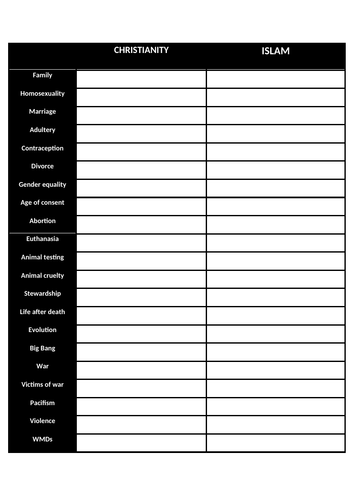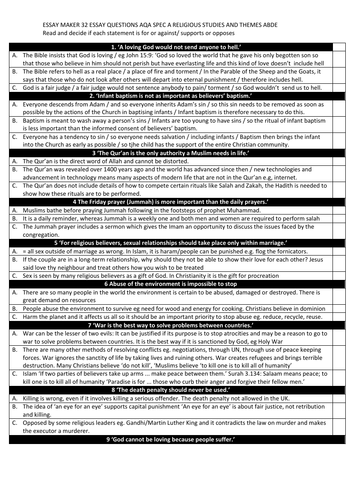RE/Sociology/Whole School Assessment Shop
Hi all. I work in developing resources for RE and Sociology based on the NEW AQA Specifications for 9-1. My resources aim to make planning more efficient and support targeting to raise pupil progress. I am proficient in developing a range of resources that will have longevity and a positive impact on learning and progress.














